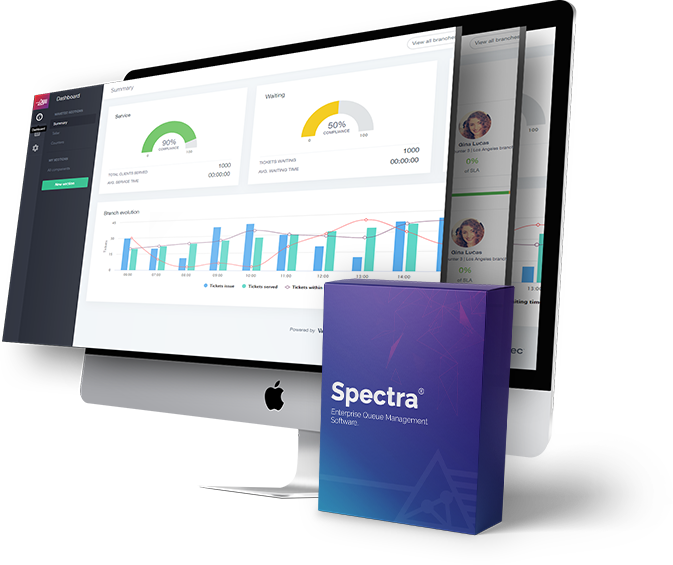In this blog, we’ll look into customer experience analytics and understand why it’s crucial for businesses today. By understanding customer experience through analytics, companies can customize their products and services to suit their customers’ needs better.
This not only helps in keeping customers coming back but also gives businesses an edge over their competitors. By leveraging analytics, businesses can boost customer retention rates, ensuring customers stay loyal to their brand.
Ultimately, this leads to a higher return on investment (ROI) as satisfied customers are more likely to repeat purchases and recommend the business to others. Let’s explore how taking on analytics can pave the way for tremendous success in customer satisfaction and business growth.
Key Takeaways
- Customer experience analytics drives revenue growth and cost savings.
- Data analytics enables personalized experiences and anticipates customer needs.
- Predictive analytics leads to proactive issue resolution and enhanced satisfaction.
- Understanding customer journeys and sentiment analysis are vital.
- Customer segmentation and cross-channel integration are crucial for tailored strategies.
- Adopting customer experience analytics ensures higher ROI and a competitive edge.
What Is Customer Experience Analytics?
Customer Experience Analytics (CX Analytics) is all about understanding how customers interact with a business and its offerings.
It involves collecting, analyzing, and interpreting data from different points of contact customers have with the business. This could mean gathering customer feedback directly or observing their actions and preferences.
Understanding customer interaction with products and services is critical in customer experience analysis. By studying customer data, businesses gain insights into what customers want and how they behave across different contact points.
Customer experience statistics are vital. They give valuable information about customer satisfaction, loyalty, and preferences.
By analyzing these statistics, businesses can identify areas for improvement, tailor their offerings to meet customer needs, and ultimately enhance the overall customer experience.
In summary, CX Analytics is about understanding customer interactions, while customer engagement analytics focuses on how customers engage with a business.
Both are crucial for businesses to thrive in today’s business industry, as they provide valuable insights that drive customer satisfaction and loyalty.
5 Most Important Metrics for Customer Experience Analytics

Determining the right metrics for customer experience mapping requires a strategic approach that aligns with the business’s overall goals and helps with customer experience analysis. Here are some of the commonly used metrics:
- NPS (Net Promoter Score)
- CES (Customer Effort Score)
- CSAT (Customer Satisfaction Score)
- Customer Retention Rate
- Social Media Sentiment
To learn more about these metrics, refer to Wavetec’s blog on how to measure customer experience.
Customer Experience Analysis
In the era of data-driven decision-making, mastering how to improve customer experience with data analytics has become dominant for businesses striving to stay ahead in competitive markets. How can customer experience analysis be executed? Let’s take a look.
- Understanding Customer Journeys
- Sentiment Analysis
- Customer Segmentation
- Customer Feedback Mining
- Predictive Analytics
- Cross-channel Integration
1. Understanding Customer Journeys
Understanding customer journeys is all about examining touchpoints and interactions. These touchpoints represent every instance where customers engage with your business, from their initial discovery of your products or services online to their interactions with your sales team or customer support representatives.
Each interaction along this journey provides valuable insights into their experiences and preferences, shaping their perception of your brand.
Analytics for customer experience allows businesses to map out these journeys, identifying touchpoints and moments of truth.
By studying these journeys, a business can learn how customers navigate their offerings and how it could use data to improve customer experience. This insight helps optimize each journey step, ensuring that customers have a seamless and satisfying experience from start to finish.
2. Sentiment Analysis
Sentiment analysis is like listening to the heartbeat of customer feedback. It involves using data to understand the emotions and attitudes expressed by customers towards a business or its products and services.
Businesses can gain valuable insights into customers’ perceptions of their brand and offerings by analyzing customer reviews, social media comments, and other feedback forms.
Using data to improve customer experience, sentiment analysis helps identify areas of strength and improvement. By addressing issues highlighted through sentiment analysis, businesses can enhance customer satisfaction and loyalty, ultimately driving business success.
3. Customer Segmentation
Customer segmentation involves dividing customers into distinct groups based on similarities in demographics, behaviors, preferences, or other characteristics.
Analytics for customer experience enables businesses to create these segments, allowing for more personalized and targeted marketing efforts.
By understanding each segment’s unique needs and preferences, businesses can tailor their offerings and communication strategies to better resonate with their customers.
Using data to improve customer experience, customer segmentation ensures that messages are relevant and impactful, leading to stronger customer relationships and increased loyalty.
4. Customer Feedback Mining
Customer feedback mining is extracting valuable insights from customer comments and reviews to enhance the overall customer experience.
Businesses can identify trends, preferences, and pain points by analyzing feedback data and informing strategic decisions and improvements. How do we use data to improve customer experience?
This approach allows businesses to listen to the voice of the customer and respond effectively, demonstrating a commitment to customer satisfaction and loyalty.
By leveraging analytics for customer engagement, businesses can foster meaningful interactions, promptly address concerns, and build stronger customer relationships.
5. Predictive Analytics
Predictive analytics uses historical data and statistical algorithms to forecast future customer behavior and preferences. Businesses can anticipate customer needs and personalize experiences by analyzing past interactions and purchase history.
Predictive analytics enables businesses to engage customers proactively, offer relevant recommendations, and optimize marketing strategies.
By using analytics to improve customer engagement, businesses can create targeted campaigns, deliver timely interventions, and enhance overall satisfaction and loyalty.
This data-driven approach allows businesses to stay ahead of customer expectations and deliver personalized experiences that drive long-term value.
6. Cross-channel Integration
Cross-channel integration means ensuring data and communication flow smoothly across all the ways customers connect with a business. This helps create a cohesive experience for customers.
When businesses combine data from different channels, they get a complete picture of how customers interact and what they prefer.
Based on customer experience analytics, businesses can deliver consistent messaging, personalized recommendations, and timely support across channels.
This integrated approach enables businesses to understand customer needs better, tailor interactions accordingly, and foster deeper connections with their audience.
By leveraging cross-channel integration, businesses can optimize the customer journey, drive engagement, and improve customer satisfaction and loyalty.
The Role of Customer Experience Data Analytics

Understanding customer experience data analytics is crucial in today’s business world. It helps companies learn about their customers’ preferences and behaviors, enabling them to improve their services accordingly.
Businesses can use data analytics to create better customer experiences, increasing customer satisfaction and loyalty.
- Tracking Customer Interactions
- Identifying Patterns and Trends
- Improving Product and Service Offerings
- Achieve Higher ROI
1. Tracking Customer Interactions
Customer experience analytics involves tracking every interaction a customer has with a business. It aids businesses in identifying patterns and trends in customer behavior.
Businesses can discern recurring themes and behaviors by examining data gathered from diverse touchpoints, offering valuable insights into customer preferences and pain points.
These insights empower businesses to anticipate customer needs, customize experiences, and proactively resolve issues, enhancing overall customer satisfaction.
2. Identifying Patterns and Trends
Customer experience analysis helps businesses identify patterns and trends in customer behavior. By analyzing data collected from various touchpoints, businesses can discover recurring themes and behaviors that provide valuable insights into customer preferences and pain points.
These insights enable businesses to anticipate customer needs, personalize experiences, and proactively address issues, ultimately enhancing overall customer satisfaction.
3. Improving Product and Service Offerings
Utilizing customer experience analytics, businesses can identify areas for improvement in their products and services.
Businesses can learn a lot by checking out what customers have to say and how they act. When they look at customer feedback and behavior data, they can determine what they’re doing well and where to improve.
This helps them decide how to improve their products and services even more top-notch.
Using this data-driven approach means businesses are constantly improving at keeping up with customers’ wants. And when customers feel heard and see that a business is stepping up its game, they’re more likely to stick around and keep coming back for more.
4. Achieve Higher ROI
Implementing customer experience analytics strategies can lead to a higher return on investment (ROI) for businesses.
Businesses can increase customer satisfaction and loyalty by leveraging data to optimize customer interactions and improve product offerings, resulting in higher retention rates and repeat purchases.
Additionally, by identifying and addressing areas of inefficiency or waste, businesses can streamline operations and reduce costs, further maximizing ROI.
How Can We Use Data Analytics to Improve Customer Experience?
Using data analytics helps businesses improve customer experiences. By understanding customer preferences, companies can tailor their strategies. This leads to personalized experiences, enhancing satisfaction and loyalty. Let’s look at this in detail.
- Personalization through Data Analytics
- Improving Customer Support with Data Analytics
- Predictive Analytics for Anticipating Customer Needs
- Customer Journey Mapping with Data Analytics
- Proactive Issue Resolution through Predictive Analytics
1. Personalization through Data Analytics
Businesses use customer experience data analytics to personalize customer experiences. Companies can tailor their products and services by analyzing customer preferences and behaviors to meet individual needs. This personal touch enhances customer satisfaction, fostering long-term relationships.
2. Improving Customer Support with Data Analytics
Data analytics enhances customer support services. By analyzing customer interactions and feedback, businesses can identify common issues and trends, allowing them to provide more efficient and practical support.
This proactive approach improves the overall customer experience and fosters positive relationships.
3. Predictive Analytics for Anticipating Customer Needs
Predictive analytics helps businesses anticipate customer needs. By analyzing historical data and trends, companies can predict future behaviors and preferences, allowing them to address customer needs proactively.
This proactive approach ensures that businesses stay ahead of customer expectations, leading to higher satisfaction and retention rates.
4. Customer Journey Mapping with Data Analytics
Data analytics enables businesses to map out the customer journey. Companies can gain insights into the customer experience by analyzing customer interactions across various touchpoints.
This understanding helps optimize each journey stage, ensuring a seamless and satisfying customer experience.
5. Proactive Issue Resolution through Predictive Analytics
Predictive analytics allows businesses to resolve issues proactively. By analyzing data, companies can identify potential problems before they escalate, allowing for timely intervention. This proactive approach minimizes customer frustration and dissatisfaction, improving customer experience.
Wavetec’s Customer Experience Analytics Solution
Wavetec is a leading provider of customer experience analytics solutions that help businesses measure, analyze, and, thus, improve their customers’ experience. By collecting data from multiple touchpoints and using advanced analytics tools, Wavetec’s solutions provide businesses with valuable insights into customer behavior and preferences with the help of user experience analytics. These insights can be used to optimize the customer experience and drive business success.
Here are the three most popular tools offered by Wavetec:
Opinion Plus
Opinion Plus, one of Wavetec’s solutions, provides a user-friendly platform for businesses to collect customer feedback. The platform lets customers conveniently share their opinions, complaints, and suggestions. By offering multiple channels for feedback collection, including kiosks and tablets, businesses can ensure that customers can provide feedback whenever and wherever it’s most convenient for them.
This accessibility encourages more customers to participate in feedback collection, providing businesses with a more comprehensive understanding of the customer experience. By using Opinion Plus, businesses can improve customer satisfaction and gain valuable insights that can drive business growth and success.
Wavetec Feedback on WhatsApp
Wavetec’s Feedback solution is now available on WhatsApp as well. It enables businesses to collect customer feedback through WhatsApp’s most popular instant messaging app. With Wavetec WhatsApp Feedback, businesses can engage with customers via a familiar and convenient channel to gain valuable insights into their experience.
By using a platform that customers use daily, businesses can increase the response rate for their feedback requests, resulting in more accurate and actionable insights.
Spectra
Wavetec’s Business Analytics tool Spectra has proven to be an excellent software for monitoring customer journeys. Spectra is a powerful business analytics tool offered by Wavetec that allows businesses to monitor the customer journey and gain valuable insights into customer behavior.
By collecting data from multiple touchpoints and using advanced analytics tools, Spectra provides businesses with a comprehensive understanding of the customer experience. With Spectra, businesses can track key performance indicators (KPIs) such as wait times, service times, and customer satisfaction scores to optimize the customer experience and drive business success.
The solution offers real-time monitoring and reporting, enabling businesses to quickly identify areas for improvement and take corrective action to enhance the customer experience. With Spectra, businesses can gain a competitive advantage by delivering an exceptional customer experience that drives customer loyalty and business growth.
Impact of Customer Experience Analytics on ROI
Customer experience analytics holds a transformative power over a business’s return on investment (ROI). By exploring customer experience analytics, companies unlock invaluable insights that directly impact their bottom line.
- Identifying Revenue-Generating Opportunities
- Minimizing Customer Service Costs with Proactive Measures
1. Identifying Revenue-Generating Opportunities
Customer experience analytics plays a pivotal role in identifying revenue-generating opportunities for businesses. Companies can uncover hidden insights that lead to innovative strategies by analyzing customer data and behavior patterns.
These insights help businesses tailor their products and services to meet customer needs more effectively, ultimately driving sales and revenue growth.
For instance, by understanding which products or features are most popular among customers, businesses can focus their efforts on optimizing and promoting those offerings, thus maximizing revenue potential.
The importance of customer experience statistics in this context cannot be overstated, as they provide the foundation for data-driven decision-making that directly impacts the bottom line.
2. Minimizing Customer Service Costs with Proactive Measures
Customer experience analytics empowers businesses to minimize customer service costs through proactive measures.
Companies can identify recurring issues and pain points by leveraging insights from customer interactions and feedback analysis. This allows businesses to proactively address these issues before they escalate, reducing the need for reactive support and associated costs.
For example, by identifying common customer inquiries or complaints, businesses can implement self-service options or improve product documentation to empower customers to find answers independently.
This proactive approach enhances the overall customer experience and helps businesses save money by streamlining support processes and minimizing resource allocation.
How do Various Industries Utilize Customer Experience Analytics?
Customer experience analytics is crucial for businesses across industries. Here are examples of how various industries may utilize these analytics:
Retail Industry
Retailers can use customer experience analytics to gain insights into customer behavior, preferences, and purchasing patterns. They can also utilize the data to create heat maps and thus, find out ways to maximize sales. Further, this information can be used to optimize the shopping experience, improve product offerings, and increase customer loyalty.
Healthcare Industry
The healthcare industry can use customer experience analytics to improve patient satisfaction, reduce wait times, and enhance overall patient experience. Healthcare providers can identify patients’ pain points by collecting feedback and analyzing their responses. Accordingly, they can make informed decisions on how to improve their services.
Hospitality Industry
The hospitality industry can use customer experience analytics to improve customer satisfaction and loyalty. By analyzing guest feedback, hotels and restaurants can make data-driven decisions on how to enhance the guest experience and differentiate themselves from competitors.
Banking Industry
Banks can use customer experience analytics to improve customer satisfaction, increase retention rates, and drive revenue growth. By collecting customer feedback and analyzing their responses, banks can optimize their services and improve the customer experience.
Final Words
As we have seen in the write-up, customer experience analytics is a powerful tool that directly impacts a business’s bottom line. Companies can find valuable insights that drive revenue growth and cost savings by looking into customer data and behavior patterns.
From identifying revenue-generating opportunities to minimizing customer service costs through proactive measures, the impact of customer experience analytics is undeniable.
Additionally, the importance of customer experience statistics cannot be overstated, as they provide the foundation for data-driven decision-making that leads to tangible business outcomes.
Ultimately, businesses that adopt customer experience analytics stand to gain a competitive edge in today’s market by delivering exceptional experiences that promote customer loyalty and happiness.
By continuously leveraging insights, businesses can adapt and evolve to meet their customers’ ever-changing needs and expectations, driving long-term success and profitability.
BOOK A FREE DEMO






